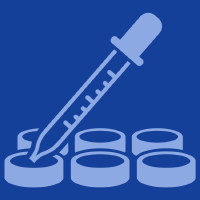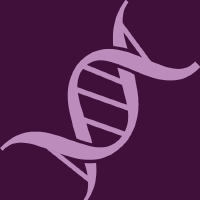Topic Editors


Autism: Molecular Bases, Diagnosis and Therapies, 2nd Volume
Topic Information
Dear Colleagues,
The causes of autism are still unknown today. More recent studies suggest that autism spectrum disorders may occur following the birth of abnormal neurons (neurobiological causes) that fail to create correct connections with the other nerve cells of the brain, to the point of causing incorrect the functioning of the entire organ. Neuronal networks are formed, above all, during the foetal development phase, allowing one to hypothesize that the cause of this disorder is due to a combination of genetic factors, congenital alterations, and environmental risk factors. There is evidence of familiarity, but also of individuals with autism as carriers of certain genetic diseases (Rett syndrome, Angelman syndrome, etc.), as well as learning disabilities such as dyslexia and dyscalculia, ADHD, Tourette's syndrome, etc. It is therefore necessary to gather more information on the possible causes of the onset of autism in order to better understand it, intervene, and propose targeted therapies. Unfortunately, the diagnosis is often made around the age of 6, when children begin to experience the first difficulties of the condition, with extremely variable symptoms both in extent and in severity. Diagnosis must not be based on psychological tests only, but also on genetic, biochemical and microbiological analysis. A list of possible biomarkers in the urine and blood to allow an early (from the first years of life) and accurate diagnosis is of fundamental importance in order to define the most appropriate therapy. Therapy must be multimodal, i.e., psychological but also pharmacological, especially when some symptoms are particularly debilitating, or present with particular associated pathologies. The outcome of this Special Issue will represent a further step in understanding the molecular mechanisms underlying autism spectrum disorder in order to achieve early diagnosis and provide researchers and clinicians with the most up-to-date information on possible biomarkers to help them understand how to implement therapeutic strategies for patients.
Prof. Dr. Lello Zolla
Prof. Dr. Kunio Yui
Topic Editors
Keywords
- genetic causes of autism
- genetic mutations
- altered metabolism
- environmental factors
- gene-environment interactions
- risk factors
- microbiota-gut-brain-axis
- diagnostic marker
- therapeutic marker
- metabolomics
- proteomics
- metagenomics
- interactomics
- neurotransmitter
- molecular neuroscience
Participating Journals
| Journal Name | Impact Factor | CiteScore | Launched Year | First Decision (median) | APC | |
|---|---|---|---|---|---|---|

Biomedicines
|
3.9 | 5.2 | 2013 | 14.6 Days | CHF 2600 | Submit |

Brain Sciences
|
2.7 | 4.8 | 2011 | 15.6 Days | CHF 2200 | Submit |

Current Issues in Molecular Biology
|
2.8 | 2.9 | 1999 | 15.8 Days | CHF 2200 | Submit |

Diagnostics
|
3.0 | 4.7 | 2011 | 20.3 Days | CHF 2600 | Submit |

International Journal of Molecular Sciences
|
4.9 | 8.1 | 2000 | 16.8 Days | CHF 2900 | Submit |

International Journal of Translational Medicine
|
- | - | 2021 | 24.2 Days | CHF 1000 | Submit |

MDPI Topics is cooperating with Preprints.org and has built a direct connection between MDPI journals and Preprints.org. Authors are encouraged to enjoy the benefits by posting a preprint at Preprints.org prior to publication:
- Immediately share your ideas ahead of publication and establish your research priority;
- Protect your idea from being stolen with this time-stamped preprint article;
- Enhance the exposure and impact of your research;
- Receive feedback from your peers in advance;
- Have it indexed in Web of Science (Preprint Citation Index), Google Scholar, Crossref, SHARE, PrePubMed, Scilit and Europe PMC.

